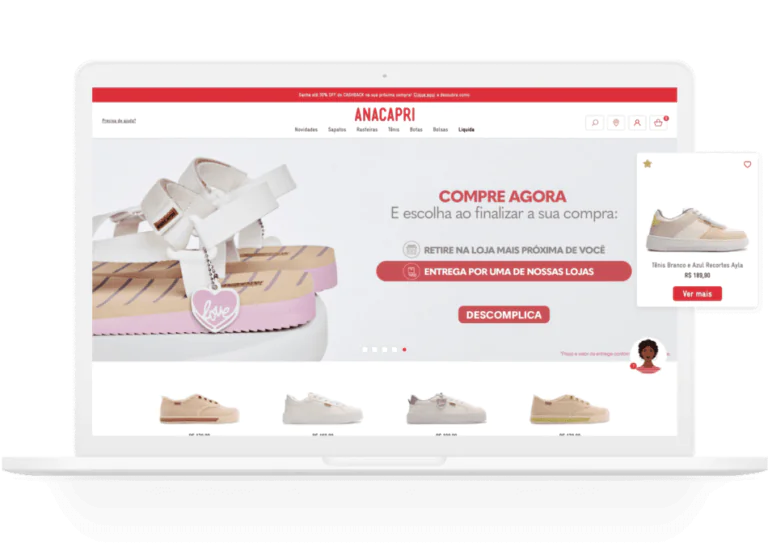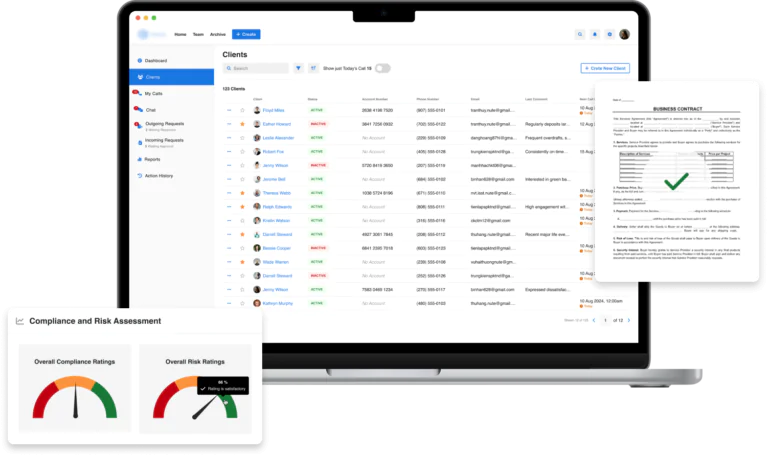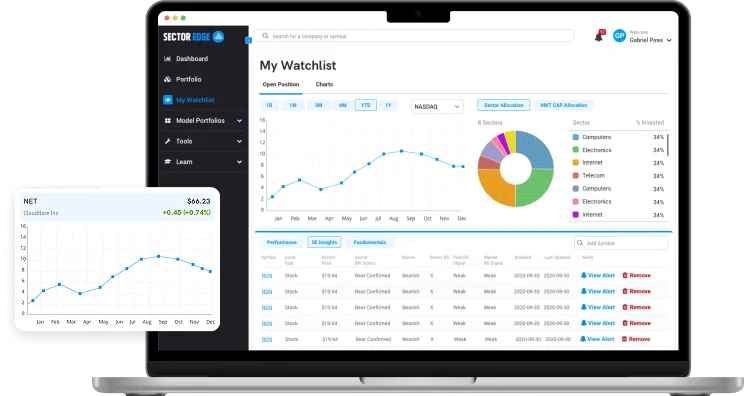Motive Retail
The platform is designed to connect car manufacturers and dealers providing an error-free data transformation within a single ecosystem
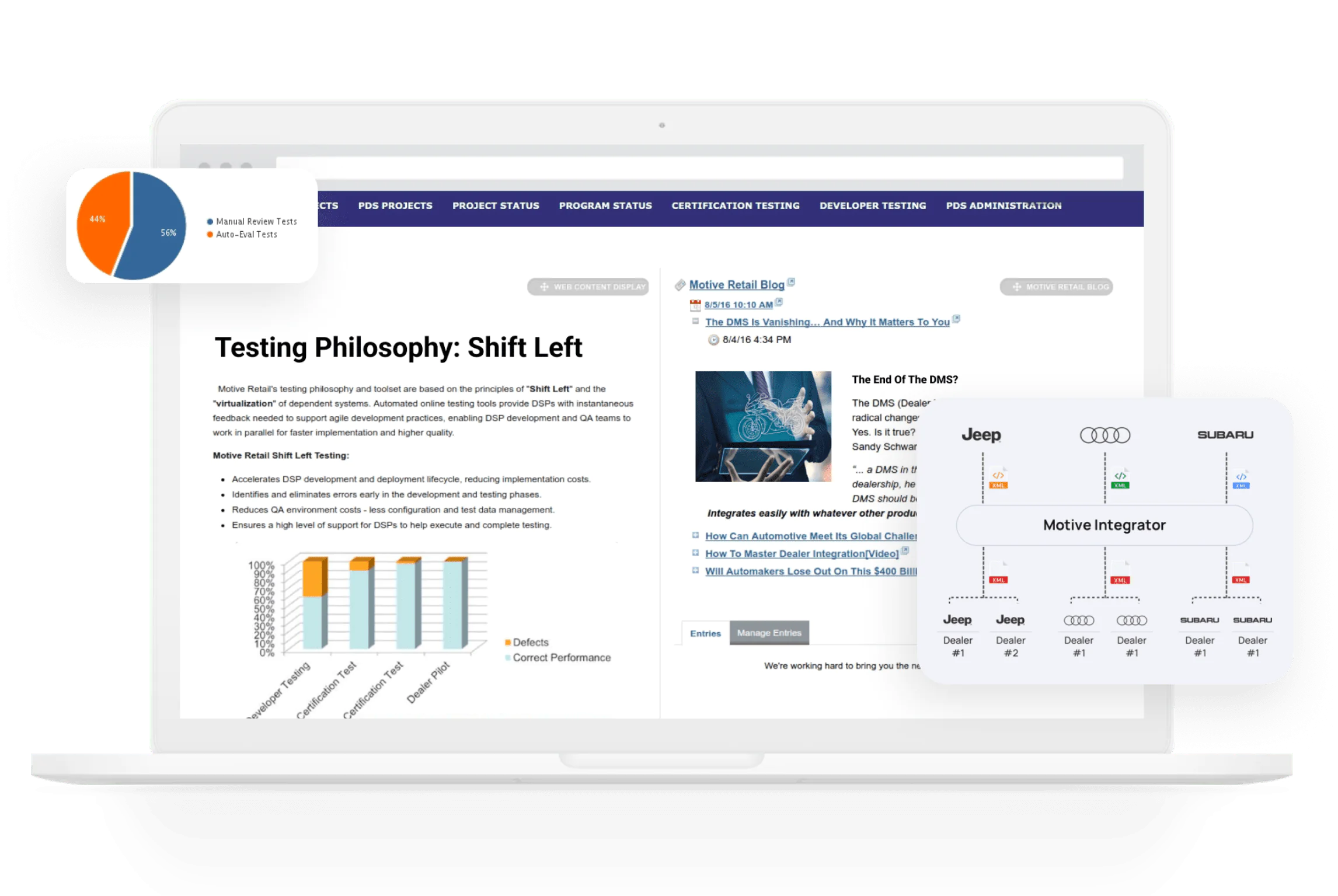
Foreword
Business messaging is a data exchange. In the automotive industry, managers did validation and decoding of dealer certification documents manually. Before.
Discover how we contributed to making car dealers worldwide more efficient in distribution and how document processing in the US automotive market went digital for the first time making dealer integration more clear.
-
Project team
3 Full-stack developers, 1 QA, 1 Scrum Master
-
In progress since
2008
Story
Story
Motive Retail is a US software company that penetrates innovative technologies to global manufacturers and dealer systems of the automotive industry.
Being at the edge of the break, the automotive industry felt a lack of technological innovation in the back office. Markedly slow manual document processing hindered companies on the way to excellent customer service.
Founders of Motive Retail wanted to better collaboration between car manufacturers and dealers across the globe within a single login platform.
At the same time, plants exchange documents with dealers and distributors in their daily operations. Both sides have their own standards of creation documents in the XML file format. The industry needed a solution to speed it up, preferably the web.
Agree, with a driver-assistance system as a common in-car feature nowadays, separate message apps and manual document recognition drop a company out of the market.
Motive Retail was looking for a partner who could contribute to the right solution and lead the development process. Aimprosoft was ready to rise to challenges, and we started to explore and delve into the domain.
Challenges
Challenges
The story behind goes around marketing cars by plants through dealer networks worldwide. The manufacturing process and trading are accompanied by heterogeneous documentation transferring from plants to dealers and back. There was no single collaboration platform.
Obstacle #1
When we took up the case, manufacturers used separate management apps to run their business and interact with dealers. Traditional online communication required from employees to login to several apps for different types of message share. It causes wasting valuable time affecting deals. Multiple dealership communication apps instead of one united ecosystem where manufacturers and dealers could meet and collaborate seamlessly stood in the way of effective dealer integration and management. We had to create one single-login ecosystem where partners can access business data.
The main goal of the project is to simplify an integration and dealership performance between car manufacturers and dealers over the world.
Obstacle #2
The key point in the process of engagement manufacturers and dealer networks is a remarkable information flow circulating between them. There are integration managers at the car plants which are responsible for dealer or other contractors integrations (cooperation) within the distribution or purchase programs. Manufacturers have a list of standards for contractors who had an intention to establish collaboration. Each automotive brand had its integration specification standards for documents within its unified database. The difference could be in the number of signs in names, their types which don’t match with dealers’ or other contractors’. Multiple heterogeneous data flows are inventory management documents, financial statements, labor time standards, parts inventory reports, material returns and claims, availability reports, orders, repair orders, invoices, fiscal files, vehicle specifications, bills of lading, and others. We were going to fight manual in document adjustment and validation needed to meet standards published by car manufacturers. We had the intention to make a product loyal to partners who are opposed to altering their already existing developed systems and processes. And we engaged in it with a great deal of energy.
Solutions
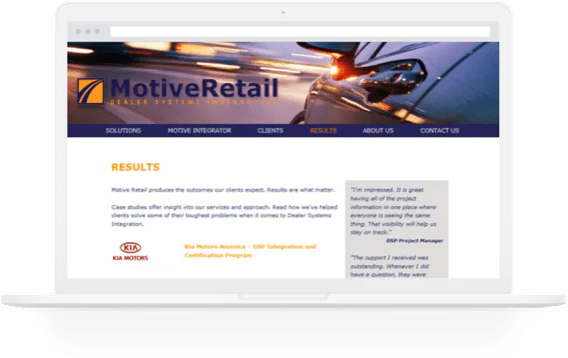
Why we turned to Liferay Portal
The client wanted us to take global content flows and merge everything into one single platform enabled to store content and manage processes, work globally, and do it under strict hierarchy rules.
We embarked on a handy content management system. The automotive industry requires a strong digital presence as the companies have a sophisticated network of sellers and OEM parts distributors worldwide. From a technical perspective, Liferay is a perfect platform that can fit every industry where there is a need for a certain number of features for a certain number of users.
A web portal built on Liferay with its extensive infrastructure, a well-ordered system of roles and permissions, content differentiation, and well-organized communication between different parties worked best for this purpose.
Fortunately, there were no messy codebase and bunches of old data until. So we started from the early scratch.
We created a single point with Liferay portal-like systems, which were used to operate companies’ daily activities: local news portals, wiki pages, document libraries, media galleries, etc. More than 200 websites were created and managed independently on the active portal with differentiation of user access to proper information through different roles and permissions.
Portal as an integration automation platform allows car manufacturers to share data with dealers across a global, dynamic, and complex ecosystem via tighter system integration within a millisecond instead of several weeks.
We resulted in a Liferay-based web portal, which, due to its umbrella structure, provided a well-ordered system of roles and permissions and arranged communication with clients. Each dealer and manufacturer got their personal website to access business information on distribution, prices, agreements, etc.
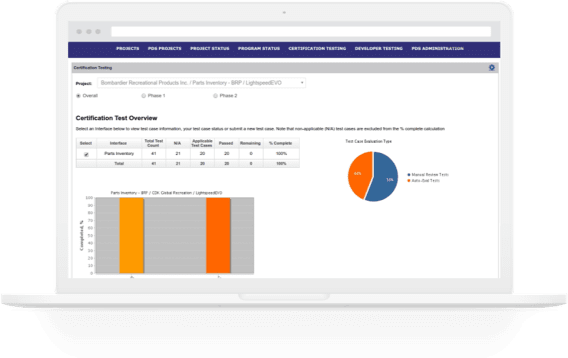
Motive Integrator
The means of document processing were aging and desperately needed to be fed with technology in the automotive industry. We worked hard to understand the principles and standards for documentation development to make a data-driven solution.
We didn’t even notice how we plunged into the documents world headfirst. Behind the simple design was a tool of big ambition.
What is Motive Integrator like?
Before Motive Integrator, managers on the plant had to validate every sign in every document coming from contractors manually with detailed comments. To a large extent, this routine delayed dealers’ responses to clients; a sales process was hampering, a dealer network received less revenue.
Motive Integrator allowed us to set up a process of information exchange strictly. We hid a complicated backend lump of code for a simple UI and supplied staff with clear user guides to get integrated with an app faster.
Partner network was provided with all necessary reliable data. Error free and fast.
We connected Motive Integrator to the Liferay portal, but not as an integral part of it. Different companies have documents of varying text formats (data structure, HTML code specified by internal rules) required to be unified. Motive Integrator does it automatically with XML files, thereby coming to nothing long manual work with mistakes. We united several web apps that were short-term solutions into one Angular-based where users can create, validate, and review documents.
Features
Stack
- — Frontend
- — Backend
- Angular 4+
- AngularJS
- jQuery
- Liferay 6.2
- Java7+
- Spring
- Hibernate
- MySQL
- Liquibase
- Maven
Results
Results
Aimprosoft brought innovation to the table
We helped to ensure the profitability of partners through dealership standardization of processes with custom automation solutions for business. Integrations helped converge these processes and data into a centralized hub of tools, resulting in better organization, efficiency, and ultimately more deals. The time-consuming labor intensity decreased thirty times.
Motive Integrator allows dealers and clients to send messages in XML files within one ecosystem engaging in collaborative projects. Liferay plays the role of storage with a feature to create custom apps (portlets) where you can realize any functionality you want. We made over a hundred portlets for Motive Integrator that allow creating, validating, transferring XML files, and various reports.
Cooperation with Motive Retail became Aimprosoft’s starting point in developing retail integration solutions on Liferay. These retail integration solutions can be successfully applied to any industry needing a fast and accurate transformation of files structured differently.
Partnering with Motive Retail, we got a strong understanding of business-specific and increased a level of custom Liferay-based solutions.
Let’s talk
The most impactful partnerships start from a first conversation – so let’s have one!
Need a retail integration solution for a specific industry?
Our team is ready to disrupt one with you.
Contact us directly via
Visit our HQ in
Cyprus, Nicosia, Griva Digeni, 81-83 Jacovides Tower, 1st floor
Meet our representatives in
The UK, Spain, Bulgaria, Poland, and over 15 other European countries
Hey Aimprosoft,
We’ve received your message and will get back to you shortly.
Contact us directly via
Visit our HQ in
Cyprus, Nicosia, Griva Digeni, 81-83 Jacovides Tower, 1st floor
Meet our representatives in
The UK, Spain, Bulgaria, Poland, and over 15 other European countries


